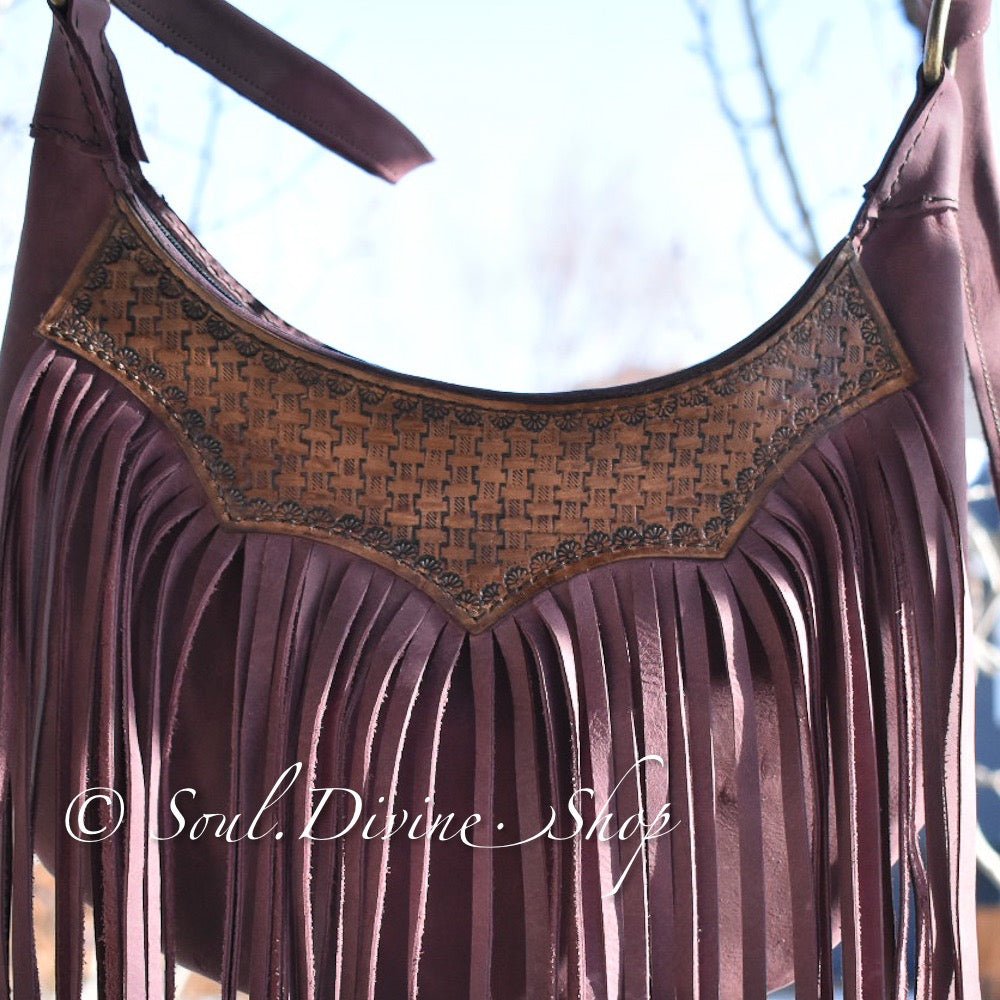
Surprising Origins and History of Fringe
Share
The Surprising Origins of Fringe: Tracing Its History Back to Its Roots
Fringe has been a fashion statement for centuries, with its origins dating back to ancient civilizations. From Native American clothing to flapper dresses in the 1920s, fringe has evolved over time and continues to be a popular trend today. Learn about the history of fringe and how it has made its way into modern fashion.
The origins of fringe in Native American culture.
Fringe has been a part of Native American clothing for centuries, serving both practical and decorative purposes. The long strands of leather or animal hide were often used to help shed water and keep the wearer dry, while also adding movement and flair to their garments. Fringe was also used to signify status and tribe affiliation, with different styles and lengths representing different meanings. Today, fringe is still a popular element in Native American fashion and continues to be a symbol of cultural identity.
The use of fringe in Native American clothing dates back to pre-colonial times, with evidence of fringed garments found in archaeological digs. The practical use of fringe was especially important for tribes living in areas with heavy rainfall, as the long strands helped to shed water and keep the wearer dry. Fringe was also used to add movement and flair to clothing, with the strands swaying and dancing with the wearer's movements.
Fringe in Western fashion during the 1920s and 1930s.
Fringe made its way into Western fashion during the 1920s and 1930s, when flapper dresses and Art Deco styles were all the rage. Designers like Coco Chanel and Jean Patou incorporated fringe into their designs, adding movement and texture to their garments. Fringe also became popular in Hollywood, with actresses like Josephine Baker and Louise Brooks sporting fringe dresses on the silver screen. The popularity of fringe continued to grow throughout the 20th century, with the hippie movement of the 1960s and 1970s embracing fringe as a symbol of freedom and nonconformity. Today, fringe can be found in a variety of fashion styles, from bohemian to Western to high fashion.
During the 1920s and 1930s, fringe was a popular embellishment in Western fashion. It added movement and texture to flapper dresses and Art Deco styles, and designers like Coco Chanel and Jean Patou incorporated it into their designs. Hollywood actresses also embraced fringe, with Josephine Baker and Louise Brooks sporting fringe dresses on the silver screen. As the 20th century progressed, fringe continued to be a symbol of nonconformity and freedom, with the hippie movement of the 1960s and 1970s embracing it. Today, fringe can be found in a variety of fashion styles, from bohemian to Western to high fashion. Whether it’s a fringe jacket, skirt, or purse, this embellishment adds a touch of fun and movement to any outfit.
The influence of fringe in the hippie movement of the 1960s and 1970s.
Fringe became a symbol of the counterculture movement during the 1960s and 1970s, as hippies embraced it as a way to express their rejection of mainstream society. Fringe jackets, vests, and skirts were popular among both men and women, and were often paired with tie-dye shirts and bell-bottom jeans. Fringe also appeared in accessories like purses, belts, and headbands. The movement's embrace of fringe reflected a desire for freedom and individuality, and the trend has continued to be associated with nonconformity and self-expression.
Fringe became a defining feature of the hippie movement, with its long, flowing strands symbolizing the free-spirited nature of the counterculture. The trend was also influenced by Native American fashion, as fringe had long been a part of traditional clothing for many tribes. The hippies' adoption of fringe was a way to connect with the natural world and reject the materialism of mainstream society. Today, fringe continues to be a popular fashion statement, with designers incorporating it into everything from handbags to shoes. But its roots in the hippie movement remain, making it a symbol of rebellion and individuality.
Fringe in contemporary fashion and its continued popularity.
Fringe has continued to be a popular trend in contemporary fashion, with designers incorporating it into their collections in new and innovative ways. From fringe-adorned boots and handbags to dresses and jackets, fringe has become a staple in many fashion-forward wardrobes. Its continued popularity can be attributed to its versatility and ability to add movement and texture to any outfit. Whether you're looking to make a bold statement or add a subtle touch of bohemian flair, fringe is a trend that is here to stay.
Fringe has a long and storied history in fashion, dating back to the 1920s when flappers donned fringed dresses to shimmy and shake on the dance floor. It continued to be a popular trend throughout the 1960s and 70s, with hippies and bohemians embracing the free-spirited vibe of fringe. In recent years, designers have taken inspiration from these past eras and incorporated fringe into their collections in new and exciting ways. From delicate fringe detailing on evening gowns to bold fringe accents on leather jackets, there is no shortage of ways to incorporate this trend into your wardrobe. And with its ability to add movement and texture to any outfit, it's no wonder that fringe has remained a popular trend in contemporary fashion.
The cultural significance of fringe and its representation in art and media.
Fringe has not only been a fashion trend, but it has also held cultural significance throughout history. In Native American culture, fringe was used on clothing and accessories for practical purposes, such as keeping insects away and providing insulation. In the 1920s, fringe became a symbol of the flapper era, representing freedom and rebellion against traditional gender roles. Fringe has also been represented in art and media, such as in the iconic flapper dress worn by Louise Brooks in the film Pandora's Box. Today, fringe continues to be a symbol of individuality and self-expression in fashion and beyond.
Fringe has been a popular fashion trend for decades, but its cultural significance goes far beyond just aesthetics. In Native American culture, fringe was used on clothing and accessories for practical purposes, such as keeping insects away and providing insulation. It was also used as a symbol of status and identity within tribes. In the 1920s, fringe became a symbol of the flapper era, representing freedom and rebellion against traditional gender roles. The iconic flapper dress, with its layers of fringe, was a statement of independence and individuality. Fringe has also been represented in art and media, such as in the work of artist Frida Kahlo, who incorporated fringe into her clothing and accessories as a symbol of her Mexican heritage. Today, fringe continues to be a symbol of self-expression and individuality in fashion and beyond, representing a desire to stand out and be unique.
See our Leather Fringe Earrings here!
Want to know more!? Subscribe to our email list!
Subscribe to our emails
For 10% off your first purchase, tips, tricks, the latest collections and exclusive VIP offers.
